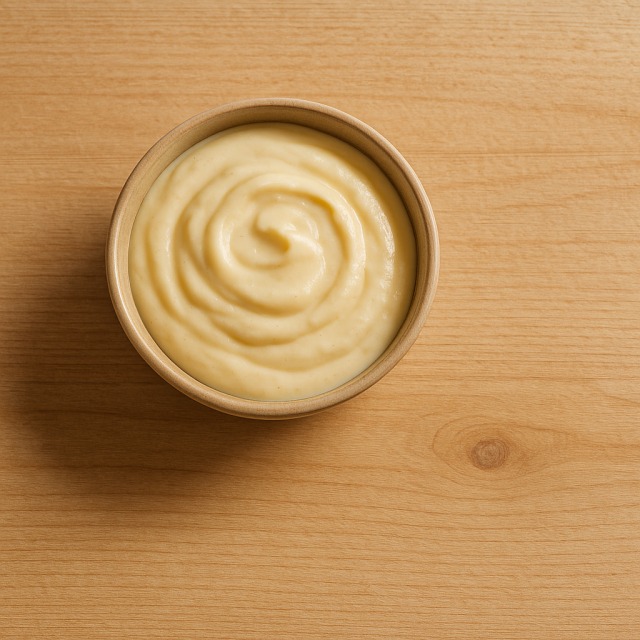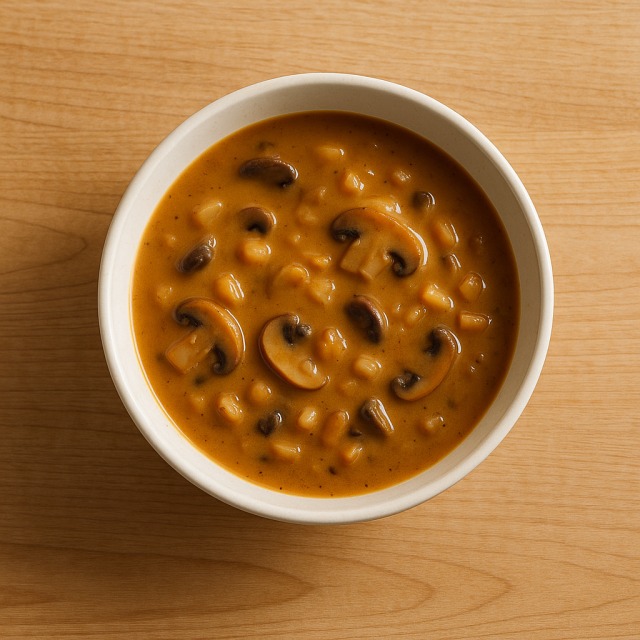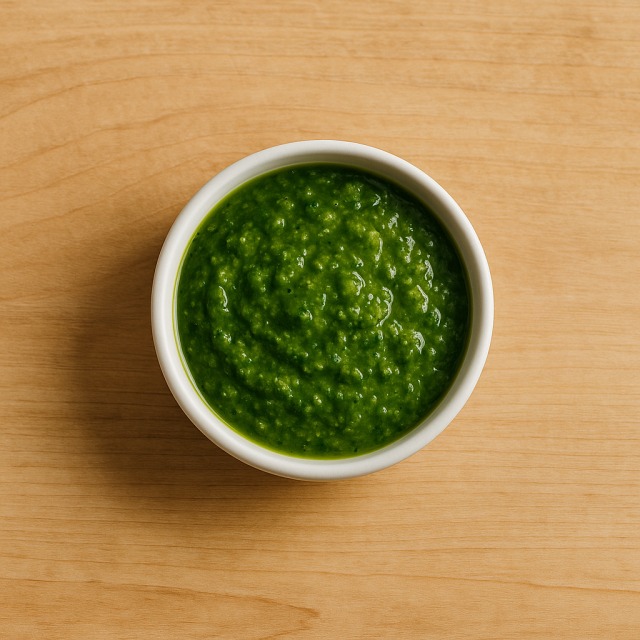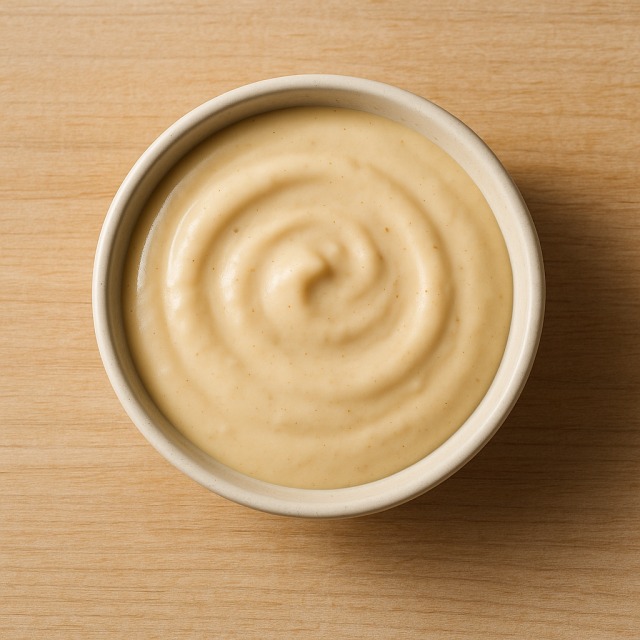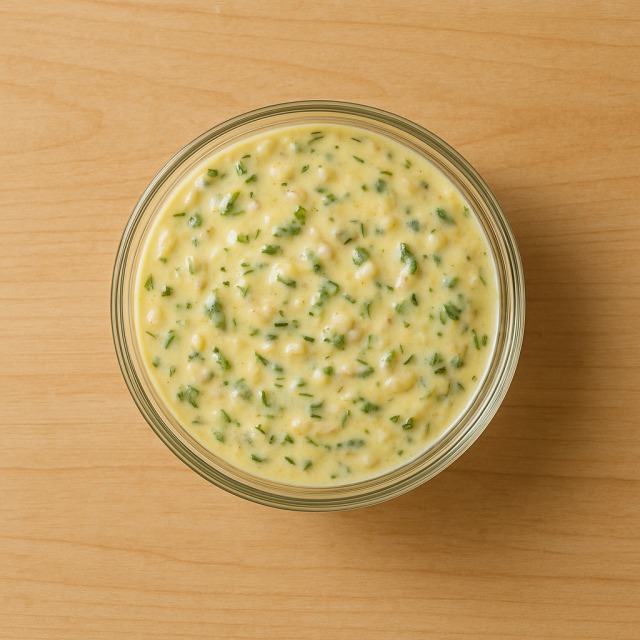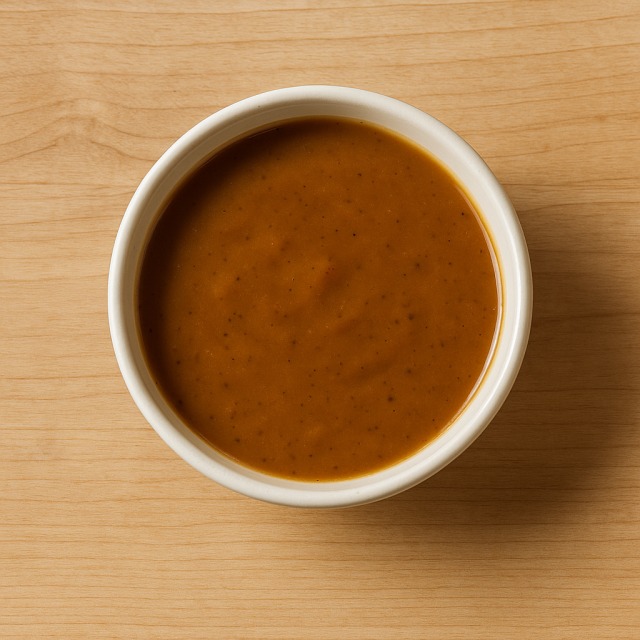Calorie Chart / Seasoning & Sauces / Pepper sauce
How Many Calories Are in Pepper sauce?
Calculation of the nutritional value & Recommended Dietary Intake of pepper sauce
For g and a calorie requirement of kcal
| Calories 18 kcal | Proteins 0.8 g | Lipids 0.9 g | Carbohydrates 1.5 g |
| 1% | 1% | 1% | 1% |
Health benefits of pepper sauce
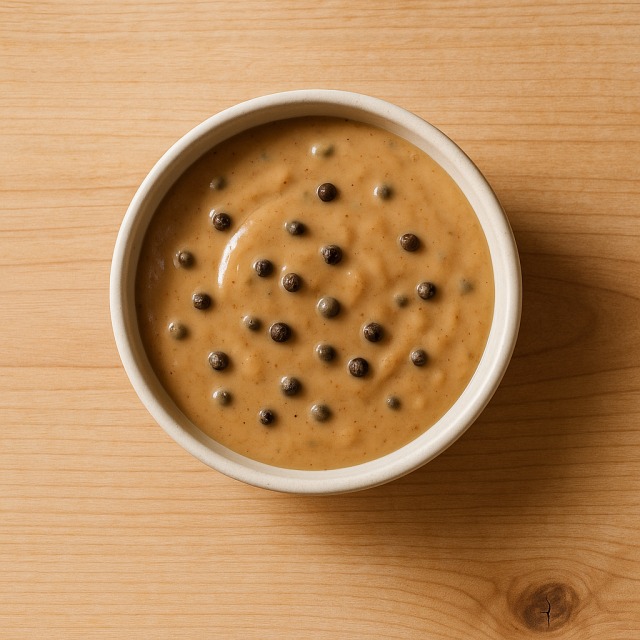
Pepper sauce - 100g
Calories 118 kcal
Proteins 5.2 g
Lipids 6.2 g
Carbohydrates 10.2 g
With about 118 calories per 100 g, pepper sauce is considered a moderate-calorie condiment: it contains neither too many calories to be automatically avoided nor so few calories that you can forget about portion size. Those calories are split between lipids (cream or butter provide creaminess), carbohydrates (usually from a splash of alcohol or stock), and a small share of proteins from the dairy base. Talking about calories is crucial here because sauces are often the hidden calories on a plate.
The crushed black or green peppercorns that give the sauce its name provide piperine, an alkaloid rich in antioxidants that may help fight oxidative stress. Piperine is also reputed (though human data remain limited) to boost thermogenesis, meaning your body could burn a few extra calories after consuming it. In addition, peppercorns deliver trace minerals such as manganese, iron, and potassium, while the cream supplies vitamin A and calcium.
Used in reasonable amounts, pepper sauce can add flavor without a dramatic rise in calories, sparing you the need to drown your food in higher-calorie gravies. The strong taste also makes it easier to keep servings small; fewer grams automatically mean fewer calories while still enjoying a gourmet touch.
Tips for incorporating pepper sauce into a balanced diet
To keep the calories of your meal in check, limit pepper sauce to one or two tablespoons and pair it with lean proteins. It works wonders on a grilled beef steak, a pan-seared chicken breast, or even a vegetarian tofu cutlet. When you accompany these mains with steamed broccoli or oven-roasted carrot, the overall calories of the plate stay moderate while the vegetables absorb a hint of the sauce, enhancing taste without excess calories.
For athletes counting calories but craving flavor, try a "light" pepper sauce: replace full-fat cream with half liquid light crème fraîche and use a no-added-sugar vegetable stock. You will slash calories yet keep the spicy kick. Serve it with brown rice or quinoa to obtain a balanced mix of complex carbs and proteins.
If you like classic French recipes, combine pepper sauce with a simple pan sauce from the meat's juices. Deglaze the skillet with a dash of cognac, add crushed pepper, reduce, then whisk in a spoon of thick cream: this technique prevents you from adding the extra calories found in ready-made sauces. Remember that every extra ladle equals extra calories, so measure before pouring.
Frequently Asked Questions
- How many calories are in pepper sauce?
- Pepper sauce provides approximately 118 kcal per 100 g.
- Is pepper sauce high in calories compared with other sauces?
- At 118 kcal per 100 g, it delivers fewer calories than mayonnaise but more calories than a tomato-based bolognese sauce, placing it in the moderate-calorie category.
- Does cooking the sauce longer increase its calories?
- Reducing the sauce evaporates water, thereby concentrating fat and sugar: the volume shrinks but calories stay, so calories per spoonful rise.
- Can I enjoy pepper sauce while watching my daily calories?
- Yes. Weigh your serving (20 g equals roughly 24 kcal) and balance the rest of the plate with low-calorie vegetables to keep overall calories in check.
- Are there nutrients other than calories to consider?
- Besides calories, pepper sauce offers piperine antioxidants and small amounts of calcium and vitamin A, but it also brings sodium and saturated fat that count toward dietary limits.
Similar foods
Information provided by Calorie Menu may contain inaccuracies or errors. It cannot, under any circumstances, substitute medical advice or medication.
